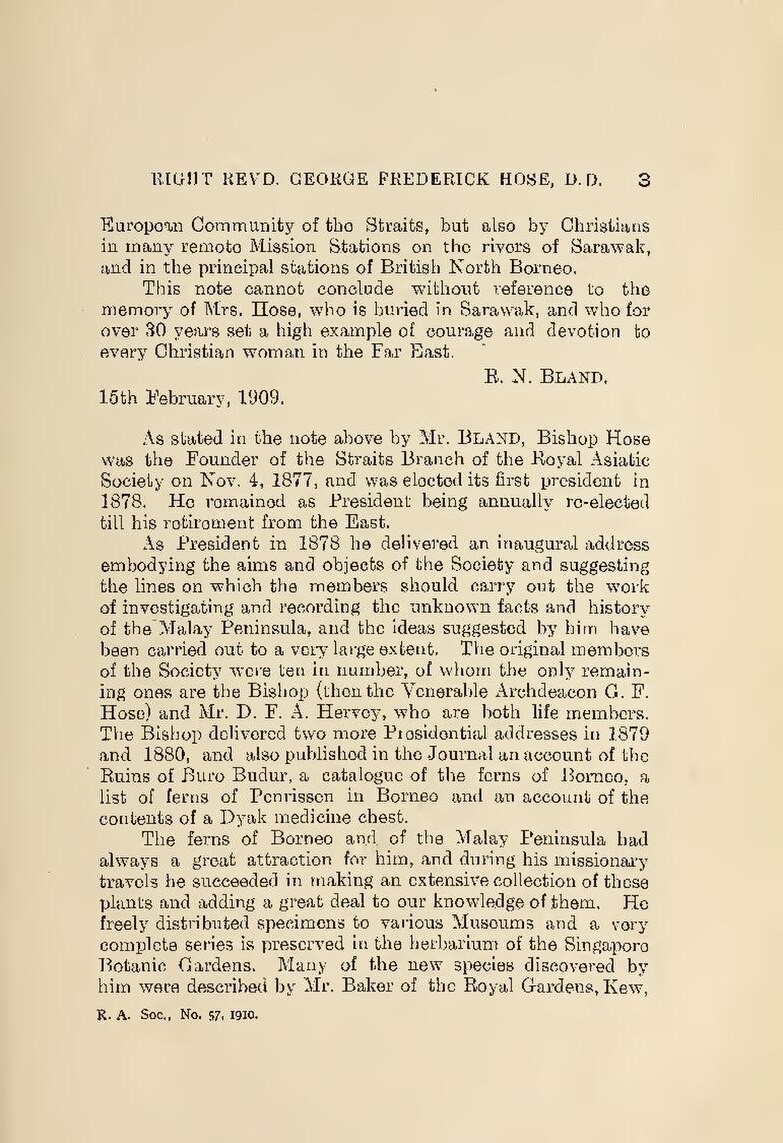European Community of the Straits, but also by Christians in many remote Mission Stations on the rivoes of Sarawak, and in the principal stations of British North Borneo.
This note cannot conclude without reference to the memory of Mrs. Hose, who is buried in Sarawak, and who for over 30 years set a high example of courage and devotion to every Christian woman in the Far East.
15th February, 1909.
As stated in the note above by Mr. Bland, Bishop Hose was the Founder of the Straits Branch of the Royal Asiatic Society on Nov. 4, 1877, and was eloctod its first president in 1878. He remained as President being annually re-elected till his retirement from the East.
As President in 1878 he delivered an inaugural address embodying the aims and objects of the Society and suggesting the lines on which the members should carry out the work of investigating and recording the unknown facts and history of the Malay Peninsula, and the ideas suggested by him have been carried out to a very large extent. The original members of the Society were ten in number, of whom the only remaining ones are the Bishop (then the Venerable Archdeacon G. F. Hose) and Mr. D. F. A. Hervey, who are both life members. The Bishop delivered two more Presidential addresses in 1879 and 1880, and also published in the Journal an account of the Ruins of Buro Budur, a catalogue of the ferns of Borneo, a list of ferns of Penrissen in Borneo and an account of the contents of a Dyak medicine chest.
The ferns of Borneo and of the Malay Peninsula had always a great attraction for him, and during his missionary travels he succeeded in making an extensive collection of these plants and adding a great deal to our knowledge of them. He freely distributed specimens to various Museums and a very complete series is preserved in the herbarium of the Singapore Botanic Gardens. Many of the new species discovered by him were described by Mr. Baker of the Royal Gardens, Kew,
